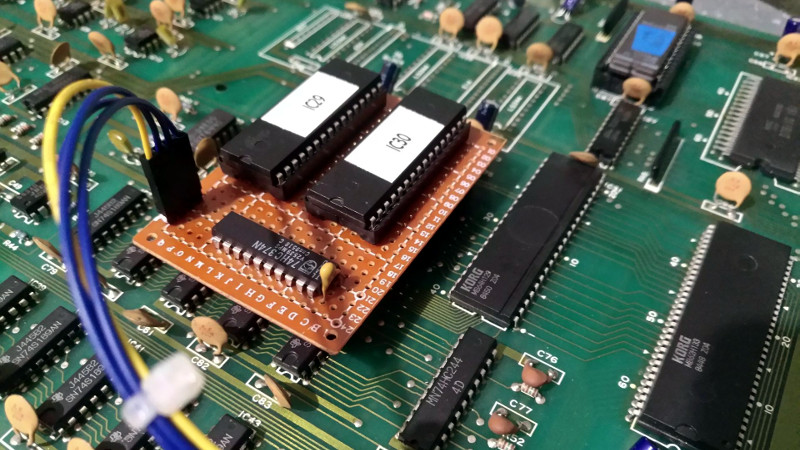The Korg DW-6000 is an entry-level synthesiser from the mid 1980s that has the classic sounds, but not enough of them. At least that was [Mateusz Kolanski]’s view, as he hacked his model with a 16-fold increase in its wavetable memory.
At the heart of the DW-6000 is NEC’s UPD7810 16-bit microcontroller, a device stuffed with ports aplenty. The Korg doesn’t use all of those ports, so he was curious as to whether its relatively small 256 kbit ROMs could be upgraded to something much bigger with the use of four unused lines to drive their addresses. This proved to be no easy task, not least because the UPD7810 is hardly a chip with a lot of published work to learn from. A manual for it came from an unexpected source: an obscure game console used it so there is support within MAME.
A significant quantity of hardware reverse engineering and software experimenting later, and he had a ROM piggyback board to plug into his lightly-modified DW-6000. The initial model used stripboard, but naturally a decent PCB was created. That might be everything, but of course some means of working with those samples was required. Enter a Windows wavetable editor and organiser to create new ROM images, for the complete DW-6000 upgrade kit.
This project took several years, proving that persistence can pay off. If you’re not used to the way microcontrollers did their interfacing back in the 1980s then it’s definitely worth a read even if old synths aren’t your thing.
This isn’t the first bit of Korg reverse engineering we’ve brought you, either.
















No one makes a comment?
This is a really great way to modify a Korg.
and a fantastic write-up of a pretty deep reverse engineering process; I’m still making my way though it all.
Fantastic work, Mateusz, thanks for sharing!
My first comment is: “I want it!”
My second: “did I miss the video with examples of the new sounds?”
Kudos!
I’m also waiting for the video with some freshly hacked sounds ;)